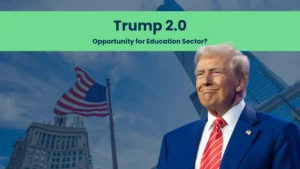When India rolled out the Goods and Services Tax (GST) on July 1, 2017, it was hailed as a landmark reform for its motto “one tax, one nation, one market”.
Along with many sectors, the education sector, which is often viewed as a public good and a driver of national development, was also subjected to market-driven rules and levies. Since then, the education sector had varying experiences under this tax system, with some services enjoying exemptions while others faced high tax rates.
The recent announcement of a new GST regime on September 3, 2025, by Finance Minister Nirmala Sitharaman has once again reshaped the tax structure. The updated model, which will be effective from September 22, consolidates the previous four tax slabs (5%, 12%, 18%, 28%) into a simplified two-tier system: 5% and 18%, along with a new 40% “sin-luxury slab” for certain non-essential items.
For parents, students, and educators, it is important to understand the new tax regime and its potential impact on the education sector.
New GST Rates for Different Educational Services:
| Education Component | Old Rate | New Rate |
| School tuition fees (Pre-school, Primary, Secondary) | Exempt – 0% | Exempt – 0% |
| Higher Education (College, University) | 18% | 18% |
| Stationery Items (Books, Pencils, Maps, Charts, Sharpener) | 12% | Exempt – 0% |
| Transportation and Catering Services | 18% | 18% |
| Coaching Centers & Private Tuitions | 18% | 18% |
| Vocational Training & Skill Development | Exempt under govt scheme (others 18%) | Likely Same Structure |
| Online coaching, certificate/diploma courses | 18% | 18% |
| Text books and Educational Print Material | Exempt – 0% | Exempt – 0% |
What does the New GST Rates Mean for the Education Sector?
For Parents & Students
- May Potential cost savings on stationery, uniforms, and essential items at a 5% tax rate
- Online education remains taxed at 18%, providing no financial relief
- Possibility of increased hidden costs if schools transfer 18% taxes on services like transportation and catering
For Schools & Universities
- Simplification of tax slabs may streamline compliance procedures
- Ambiguities in essential vs. non-essential classification could lead to disputes
- Non-core services such as transport and canteens may become more expensive
For EdTech & Training Institutes
- No reduction in the 18% GST burden could hinder mass adoption of digital learning
- Startups and mid-sized EdTech companies catering to price-sensitive students may experience a slowdown in growth
How could it affect International Educational Services Providers?
For global educational providers, the new tax regime indicates a move towards simplification while also serving as a reminder to proceed with caution. With GST on Ed-tech platforms, online, and non-core services still remaining the same at 18%, scaling the mass market will be challenging unless adapted.
Although the GST rates are not very encouraging, India’s Ed market which is projected to exceed $300 billion by 2030, offers a significant opportunity for international EdTech firms and online education services providers to invest in India. However, achieving success in this market will depend on adapting pricing models, building local partnerships, and navigating compliance smartly.
Key Takeaways – Reforms Needed to Empower the Education Sector
1. Promoting Digital Education:
As the nation moves towards a Digital Bharat, lowering the GST on educational technology products from 18% to 5% could enhance accessibility and affordability.
2. Mitigating Ancillary Services:
Re-evaluating the tax rates on school buses, catering, and hostel services is crucial to prevent indirect inflation of school fees and alleviating financial burdens on low-income families.
3. Reducing Cost on Essentials:
Educational essentials like lab equipment, affordable digital tools, and uniforms should fall under 5% to reduce costs for families.
4. Facilitating Collaboration:
Educational institutions, EdTech industry leaders, and policymakers must collaborate to refine tax regulations that facilitate growth
Conclusion
The new GST regime marks another chapter in India’s ongoing experiment in balancing fiscal policy with social objectives. Despite efforts to streamline processes, the education sector continues to face a tug-of-war between accessibility and affordability. Parents are still burdened with undisclosed expenses, educational institutions grapple with non-essential costs, and EdTech companies are hampered by the hefty 18% GST rate.
Education is not just another sector; it’s the foundation of future growth. If GST is to truly serve its purpose, policies must keep pace with the evolving needs of learners and institutions. That means refining exemptions, easing uncertainties, and creating a balance where taxation does not overshadow accessibility.





